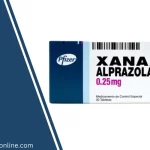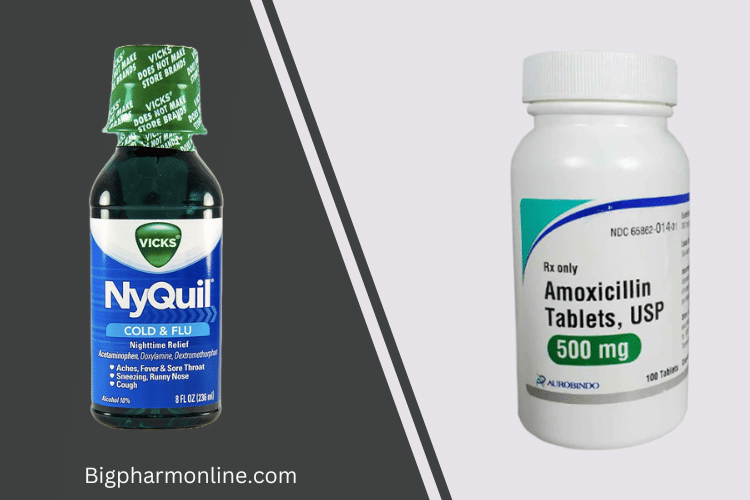Is Altavera A Low-Dose Birth Control? (+3 Vital Tips)
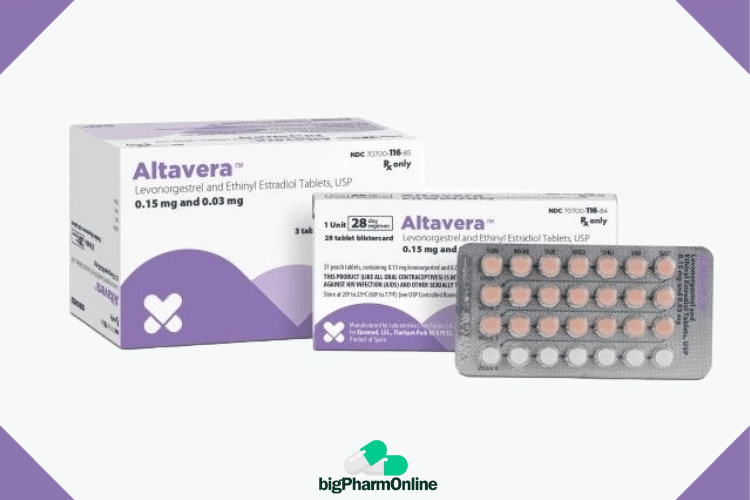
Birth control pills have been in existence for decades now. The earlier formulations contained high doses of hormones which made them have numerous side effects.
Modern birth control pills have drastically reduced the doses of hormones used. This has caused a significant reduction in the risk of side effects associated with their usage.
In this article, the pharmacist will explain if Altavera is a low-dose birth control pill. You’ll get to know what qualifies a pill as low-dose. And also how to correctly take Altavera for maximum benefits.
Key points
- Altavera is classified as a low-dose birth control pill since it contains 0.03 mg of estrogen (ethinylestradiol), which is within the 0.02 – 0.035 mg range referred to as low-dose.
- It comes in a 28-day pack with 21 peach-colored active tablets and 7 white inactive tablets.
- Women over age 35 who smoke cigarettes should not take Altavera.
What Is A Low-Dose Birth Control Pill?

A low-dose birth control pill is any birth control pill that contains less than 50 micrograms of estrogen. The term, when used, usually describes specifically those pills that contain 20 to 35 micrograms of estrogen.
Low-dose pills pose a lesser risk of side effects when compared to the older formulations. Earlier birth control pills formulated in the 1960s contained between 100 to 150 micrograms of estrogen.
They were associated with serious side effects such as blood clot formation, stroke, and heart attack. High-dose combined oral contraceptives are rarely in use now. The term now describes pills that contain more than 50 micrograms of estrogen.
Combined oral contraceptives (COCs) like Falmina, Altavera, and Marlissa usually contain two hormonal components. The estrogen component and the progesterone component.
The estrogen used is synthetic and the commonest one is ethinylestradiol. There is also Mestranol which is a prodrug that requires conversion into ethinylestradiol before it becomes effective.
The progesterone used in COCs are synthetic too and are often referred to as progestins or progestogens. Commonly used progestins in COCs include levonorgestrel, norethindrone, drospirenone, and norgestimate.
Altavera contains ethinylestradiol as the estrogen component and levonorgestrel as the progesterone component.
Is Altavera A Low-Dose Birth Control Pill?
Altavera is a low-dose birth control pill because it contains 0.03 milligrams of ethinylestradiol (estrogen). Pills containing doses of estrogen between 20 to 35 are classified as low-dose birth control pills.
Altavera also contains 0.15 mg of levonorgestrel. This dose is low enough to provide adequate contraceptive effects while also lowering the risk of side effects.
Things to know about Altavera
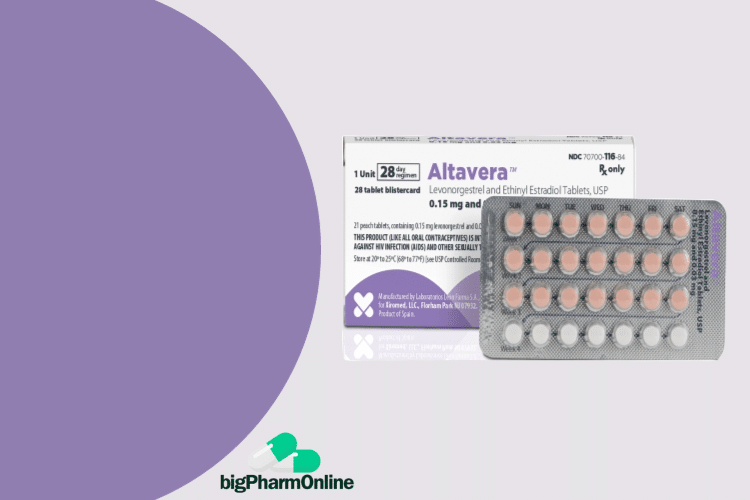
Altavera is a combined oral contraceptive containing ethinylestradiol and levonorgestrel as active ingredients. It is classified as a low-dose birth control pill and as such has a lower risk of causing serious side effects such as stroke, blood clots, and other cardiovascular complications.
1 blister pack of Altavera contains 21 peach color tablets and 7 white tablets. This makes it a total of 28 tablets. The 21 peach tablets are active pills. They contain the two hormones required for contraception and are meant to be taken for 21 consecutive days.
The 7 white tablets are inactive and do not have any hormones in them. They are to be taken for 7 consecutive days.
How to Take Altavera
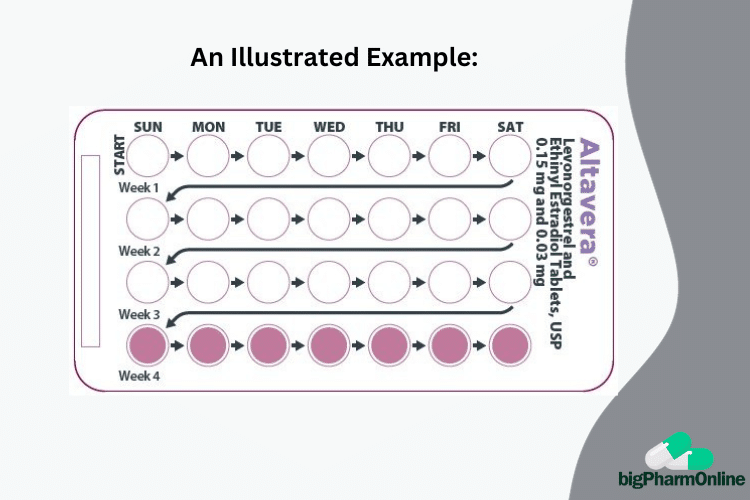
Altavera is taken once daily and at the same time each day. You start by taking one active peach tablet daily for 21 consecutive days, followed by one white tablet daily for 7 consecutive days.
The pill can be started either on the first day of menstruation or the Sunday after the commencement of your period. Starting on the first day of menses gives immediate protection against pregnancy.
On the other hand, commencing on the Sunday after the onset of menses will have you wait for 7 days before contraceptive protection can be guaranteed.
During these 7 days, alternative non-hormonal methods of contraception such as the use of condoms or spermicide are to be implemented.
Withdrawal bleeding occurs within 3 days of taking the white pills and may not end before you commence your next dose of peach active pill.
Side Effects Of Altavera
The side effects of Altavera are usually mild and resolve on their own as you continue taking the pills.
Common side effects include nausea, vomiting, breast tenderness, weight changes (gain or loss), spotting, changes in menstrual flow, abdominal cramps, etc.
Serious side effects are rare and include cardiovascular disorders, certain cancers, gallbladder disease, etc.
Taking the pills at bedtime or after an evening meal helps prevent nausea and vomiting.
People who should not take Altavera
Women who smoke and are at least 35 years of age should not take this pill. They are at a higher risk of experiencing cardiovascular complications.
Altavera is also not to be used by women with high blood pressure, diabetes, ongoing pregnancy, or cardiovascular diseases.
Final Thoughts
Low-dose pills like Altavera have the advantage of causing minor side effects. When taken correctly, it can effectively prevent pregnancy in women of childbearing age.
References
- DailyMed: ALTAVERA- levonorgestrel and ethinyl estradiol
- Dando TM, Curran MP. Low-dose ethinylestradiol/levonorgestrel. Drugs. 2005;65(16):2299-306; discusion 2307-8. doi: 10.2165/00003495-200565160-00007. PMID: 16266199.
- Cooper DB, Patel P, Mahdy H. Oral Contraceptive Pills. [Updated 2022 Nov 24]. In: StatPearls [Internet]. Treasure Island (FL): StatPearls Publishing; 2024 Jan-.
Was this helpful?
About the Pharmacist
Pharm. John Mark (BPharm) is a licensed pharmacist with over 6 years of experience spanning clinical, community, and hospital pharmacy settings.
His wealth of experience and expertise makes him your knowledgeable and go-to source for all pharmacy and medication-related questions.





